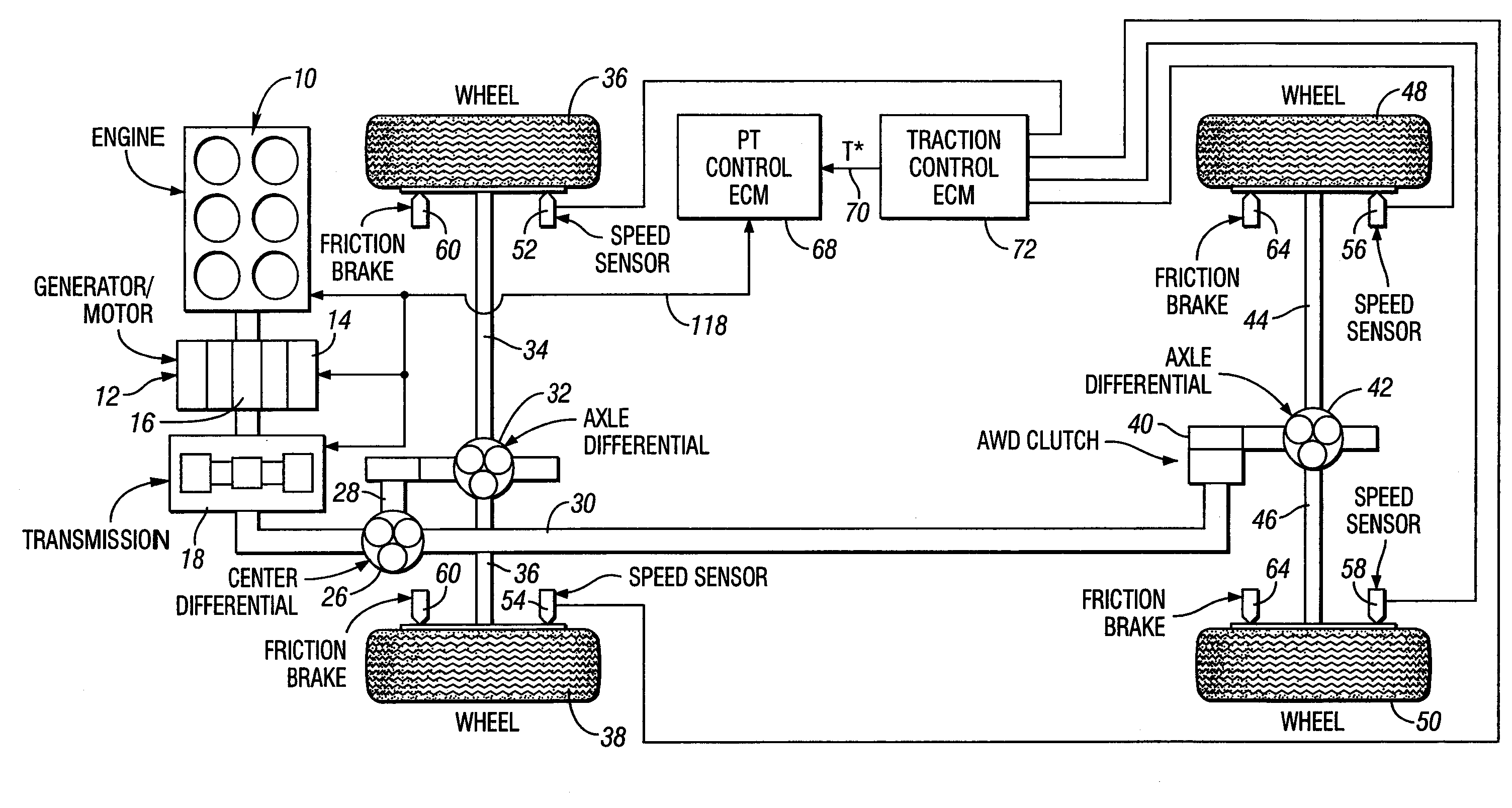Traction and stability control system and method for a vehicle with mechanically independent front and rear traction wheels
a technology of traction control system and rear traction wheel, which is applied in the direction of brake system, tractors, instruments, etc., can solve the problems of wasting energy, degrading acceleration performance of the vehicle, and powertrains that cannot independently request the powertrain, so as to avoid wheel slippage, improve vehicle stability, and avoid loss of lateral tractive effort.
- Summary
- Abstract
- Description
- Claims
- Application Information
AI Technical Summary
Benefits of technology
Problems solved by technology
Method used
Image
Examples
Embodiment Construction
[0022]FIG. 1 schematically illustrates an all-wheel drive hybrid electric vehicle powertrain with an engine shown at 10 and a generator-motor shown at 12. The engine and the generator-motor are a source of motive power. The engine 10 includes a torque output crankshaft drivably connected to a rotor of the generator-motor.
[0023]When the generator-motor is in a torque delivery mode, electric power is distributed to generator-motor windings schematically, shown at 14, so that the rotor torque schematically, shown at 16, augments engine power distributed to a geared transmission schematically shown at 18.
[0024]The torque output shaft of the transmission 18 is delivered to a center axle differential 20. Typically, the differential 20 would include a differential carrier connected drivably to the power output shaft of the transmission. The carrier is part of an assembly that includes pinions that drivably engage a differential side gear, one side gear being connected by gearing 28 to one ...
PUM
 Login to View More
Login to View More Abstract
Description
Claims
Application Information
 Login to View More
Login to View More - R&D
- Intellectual Property
- Life Sciences
- Materials
- Tech Scout
- Unparalleled Data Quality
- Higher Quality Content
- 60% Fewer Hallucinations
Browse by: Latest US Patents, China's latest patents, Technical Efficacy Thesaurus, Application Domain, Technology Topic, Popular Technical Reports.
© 2025 PatSnap. All rights reserved.Legal|Privacy policy|Modern Slavery Act Transparency Statement|Sitemap|About US| Contact US: help@patsnap.com



